
Games that teach STEM may not be immediately obvious as a STEM topic—though many may have a scientific theme or mathematical computation, I’m looking for less obvious connections as well!
When evaluating STEM board games, I use this criteria:
I’ve loosely arranged this list by recommended ages, though many games work well for all ages above the minimum (and some can be adjusted for younger players). Enjoy exploring STEM through board games with your family and/or students!
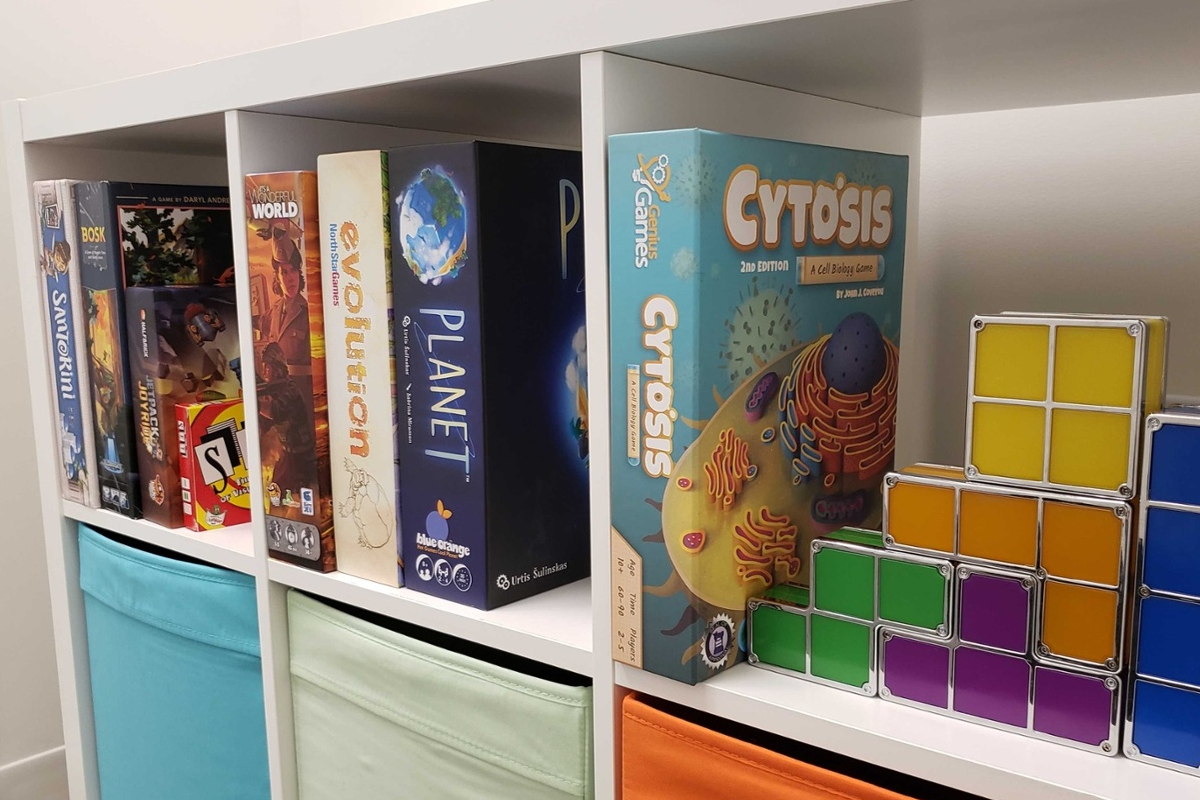
Ages: 5+
Players: 2-4 players
Time: 20 minutes
Categories: Dexterity, building/engineering, 3D, balance, competitive or cooperative
About: A stacking game for all ages! Players draft cards to choose their building blocks for their tower. The unique twist is that players must plan how they are going to build the set of pieces before they start building. The cards include the measurements of the pieces, and many of the pieces are unusual shapes that will require creative planning. I also like that there is a cooperative version of the game, which allows players to better practice measurement vocabulary as they develop communication skills.
Link to purchase
Ages: 6+
Players: 1-4 players
Time: 1-5 minutes
Categories: Competitive, dexterity, matching
About: In Flanx, players go head-to-head trying to match their cards to form a path that will block (or flank) the other player. Players play in real time, so speed of pattern recognition is encouraged, but for first time players you could make the game turn-based.
Link to purchase
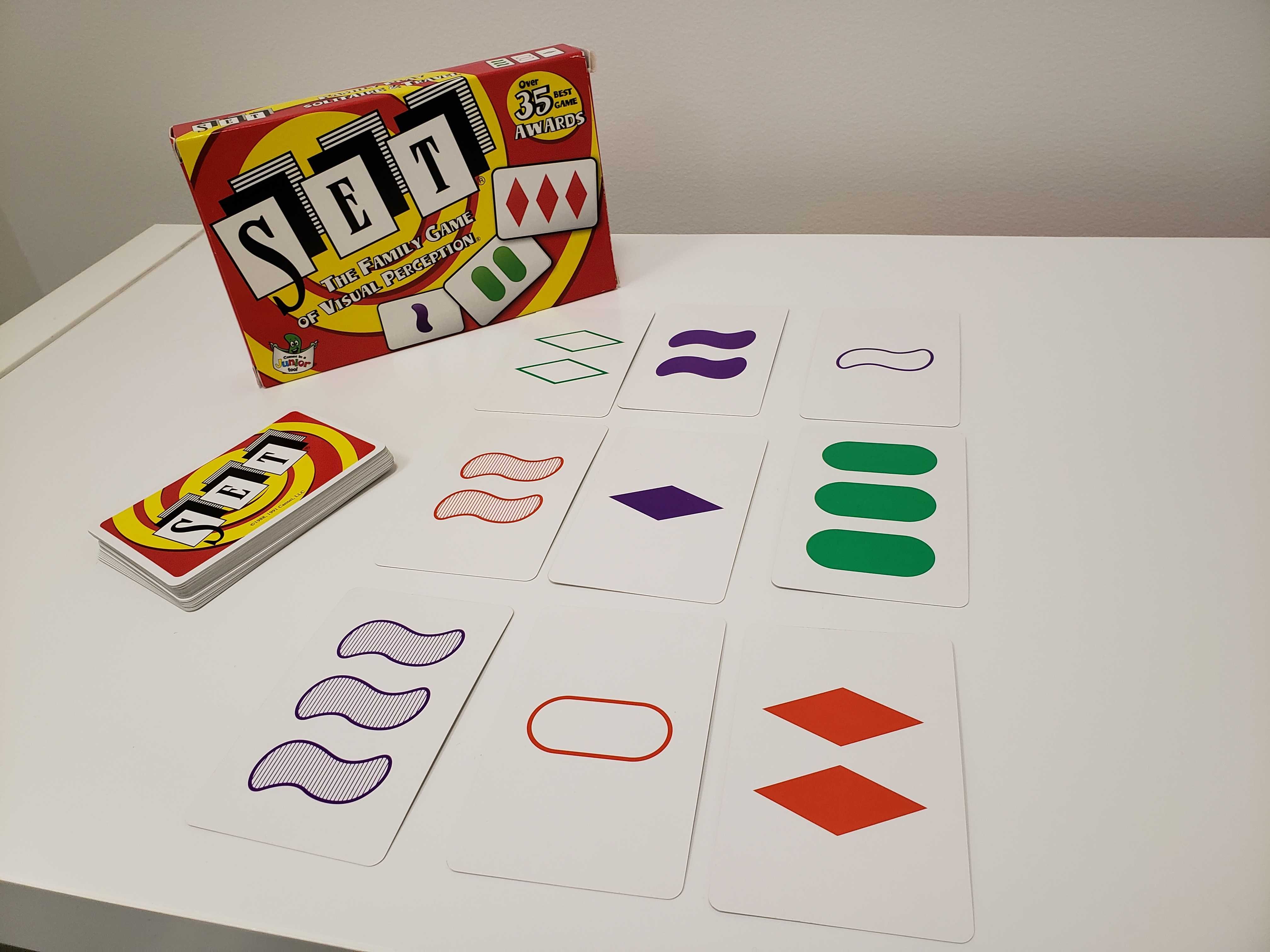
Ages: 6+
Players: 1+
Time: 20 minutes
Categories: Matching, patterns, card game
About: In Set, players must identify sets of three that are all alike or all different in four categories: color, number, shape, and shading. Families can discuss ideas such as: same, different, comparison, and checking each other’s solutions, as they play. There’s also Set Jr. which has three of the four categories, and is in a smaller travel-friendly size.
Link to purchase
Ages: 6+
Players: 1+
Time: 20 minutes
Categories: Dexterity, balance, cooperative
About: Players work together to navigate a knight through different quests on the board. The box becomes a component of play, where players set the boards onto the open box and use levers at the four sides of the box to tilt the board and cause the knight to slide to his objectives. There are great opportunities for communication and discourse: “Which way do we want the knight to go?” “If we want the knight to go this way, which lever should we lift and how much?” and in later levels: “Which objective is easier? Why?”
Link to purchase
Ages: 6+
Players: 2-8
Time: 20 minutes
Categories: Puzzle, matching, spatial reasoning, competitive
About: The objective of Latice Hawaii is easy to explain: be the first player to place all your tiles. The tiles feature different colors (with corresponding pattern for color blind), and different shapes. There’s many ways to play faster, including matching the color and/or shape of tiles, playing on certain squares, or using the wind to shift other tiles to get those benefits. Playing this game is not dependent upon language or reading, so it’s great for younger players.
Link to purchase
Ages: 7+
Players: 2-4 players
Time: 20-30 minutes
Categories: spatial reasoning, puzzle, set collection, multi-step problem solving, competitive
About: Players are vying to collect the items on their card, which are scattered throughout the market on various boats. The boats slide and rotate in certain configurations—provided there is room! This game requires consistent re-thinking, because how other players move the boats on their turn could affect your own plan. Players have to think ahead and visualize how the boats will move, in order to effectively plan their turn and use the least number of actions possible to get to their objectives.
Link to purchase
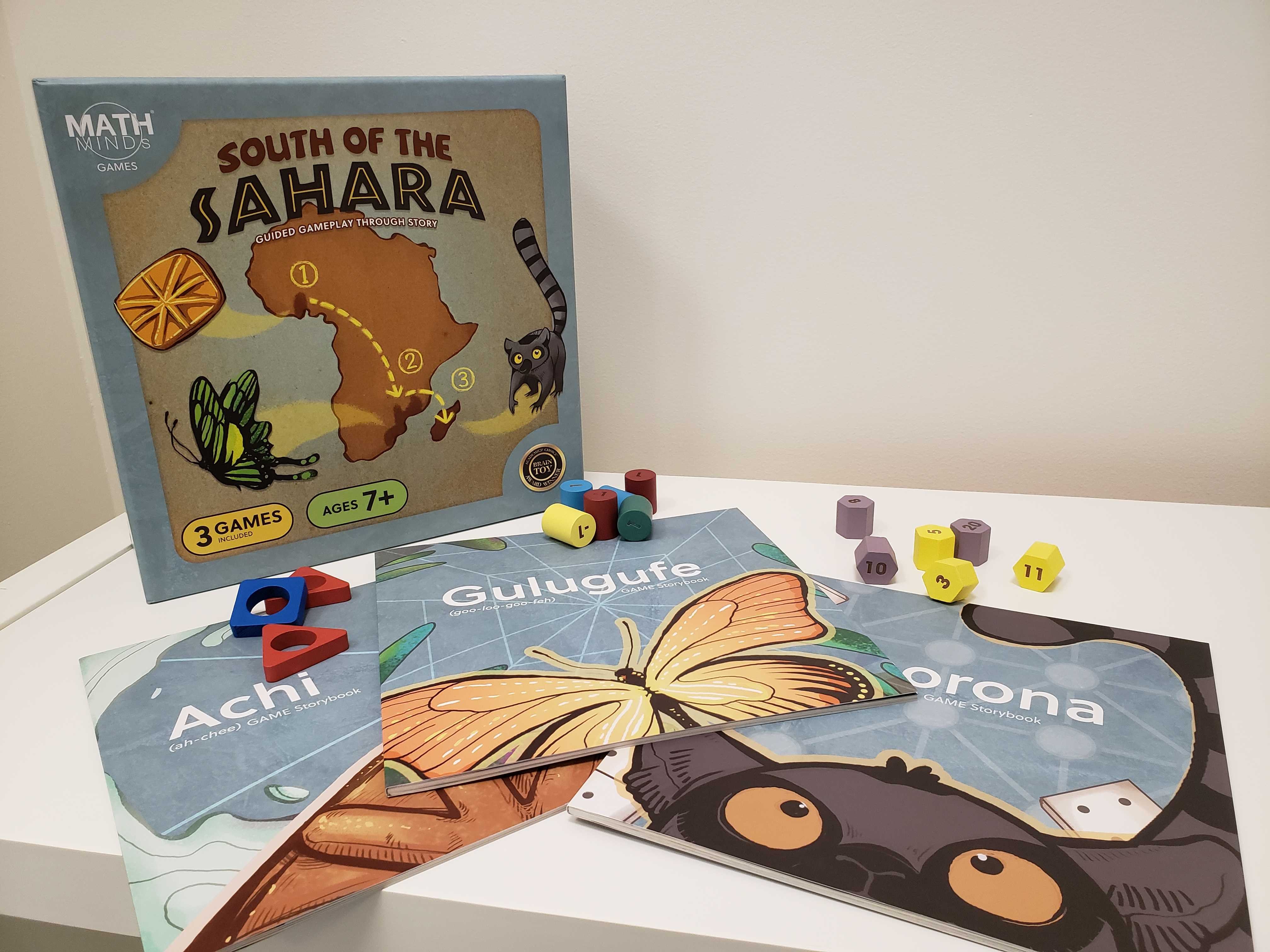
Ages: 7+
Players: 2 (two games), 2 or 4 (one game)
Time: 10-30 minutes each game
Categories: Mathematics (addition/subtraction, comparing numbers, negatives), competitive, multi-step problem solving, history
About: A set of storybook board games that explore mathematical concepts through ancient games played in various areas of Africa. In the first chapter, players learn about the history of the game and how to play a (close-to) original strategy version. In the second chapter, players learn how to play a mathematized version of the game, exploring a singular mathematical concept. The third chapter brings the story together, showing the connections between math, culture, history, and the world around us. (Disclaimer: this is our organization’s set of games, and I worked on the games).
Link to purchase
Ages: 8+
Players: 1+
Time: 15 minutes
Categories: Dexterity, competitive, balance, physics, 3D
About: Players actively explore physics and engineering principles as they place different rods onto the growing structure. Don’t let it fall! Players develop fine motor skills, patience, and a sense of how balance works through the perception-action cycle. Comparing shapes (smaller, larger), gravity, middle, and balance are a few of the key terms families can discuss as they play.
Link to purchase
Ages: 8+
Players: 2-4 players
Time: 20 minutes
Categories: Competitive, multi-step problem-solving, history, building, 3D
About: Designed by a mathematician, Santorini is a perfect information strategy game. I like to think of this game as a more accessible version of Chess, because although players have more limited options (move or build), that makes it easier to learn how to think multiple steps ahead to what your opponent will do. I also like the 3D element to this game, players are trying to build a series of steps to get to the highest level, while preventing their opponent from doing the same by blocking them. This game can be frustrating for even the cleverest of players, so it is a great tool to explore the social-emotional concepts of patience and good sportsmanship. The theme makes it more accessible and exciting to younger players than many abstract strategy games.
Link to purchase
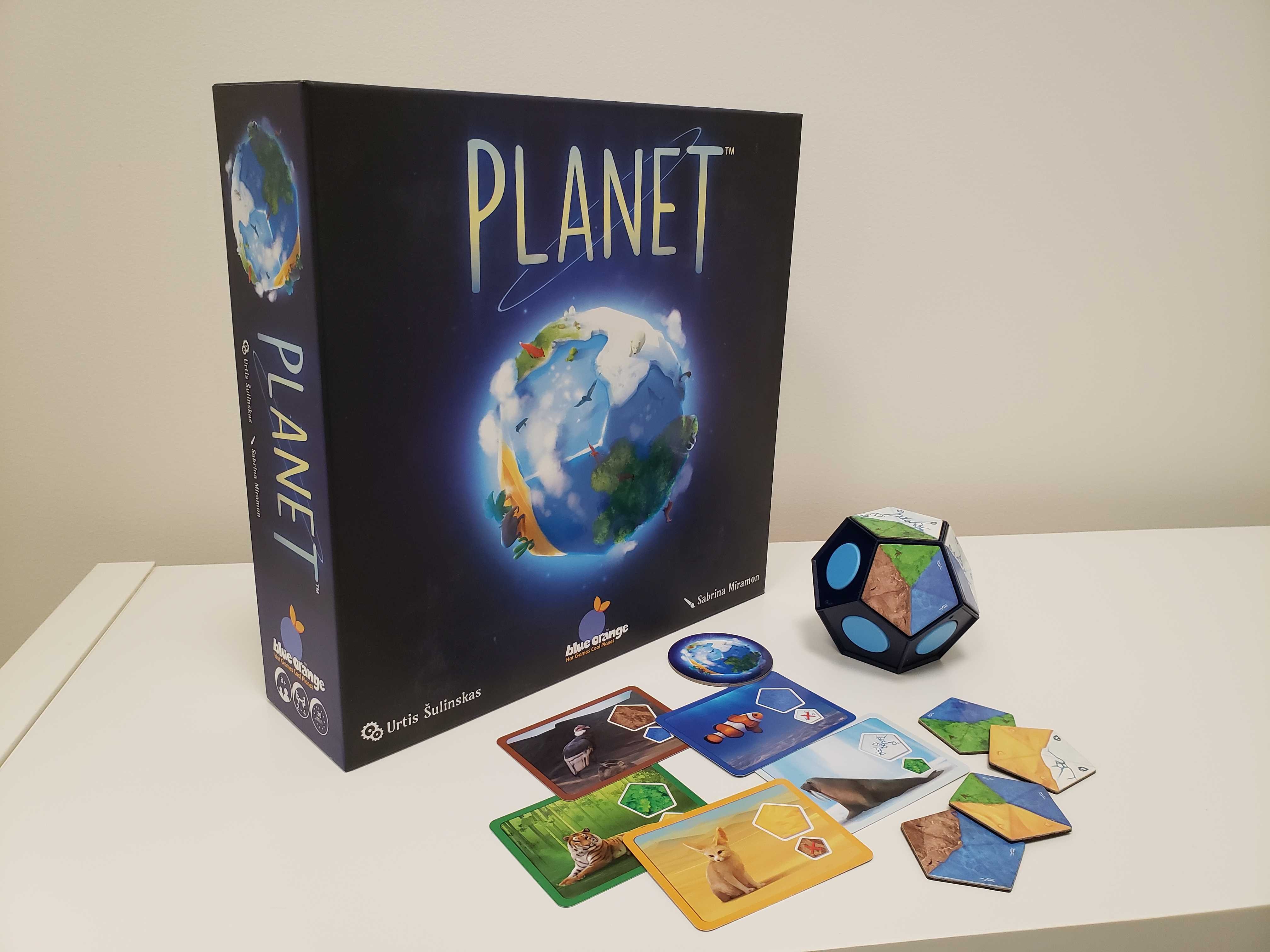
Ages: 8+
Players: 2-4 players
Time: 30-45 minutes
Categories: Environmental science, matching, competitive, drafting, animals, spatial reasoning, 3D
About: Players create their own 3-dimensional planet of varying shapes and sizes of major land masses and biomes. Starting with a blank dodecahedron (12-sided three-diensional shape), players will take turns drafting hexagon tiles and placing them onto their individual planets. By matching like biomes (mountain, ocean, desert, forest, and ice), players compete to obtain animal objective cards each round, such as having the largest continuous area of a particular biome. The focus is more on spatial reasoning and puzzling out the best pieces and placement, rather than science content, but it does it very well, enabling players to think visually and spatially.
Link to purchase
Ages: 10+
Players: 2-5 players
Time: 40 minutes
Categories: Chemistry, science, movement, set collection
About: Genius Games is lauded for their science-based games, so there’s no surprise that two of their games made it onto this list (see Cytosis below). When I met him, founder John Coveyou said that they start their design process with a certain science concept in mind, then think about what game mechanics can emulate that concept. This approach work well—as the game mechanics in Periodic place heavy emphasis on the different groupings and attributes of elements. These groups are not only important to their location on the periodic table, but also how that element functions!
Link to purchase
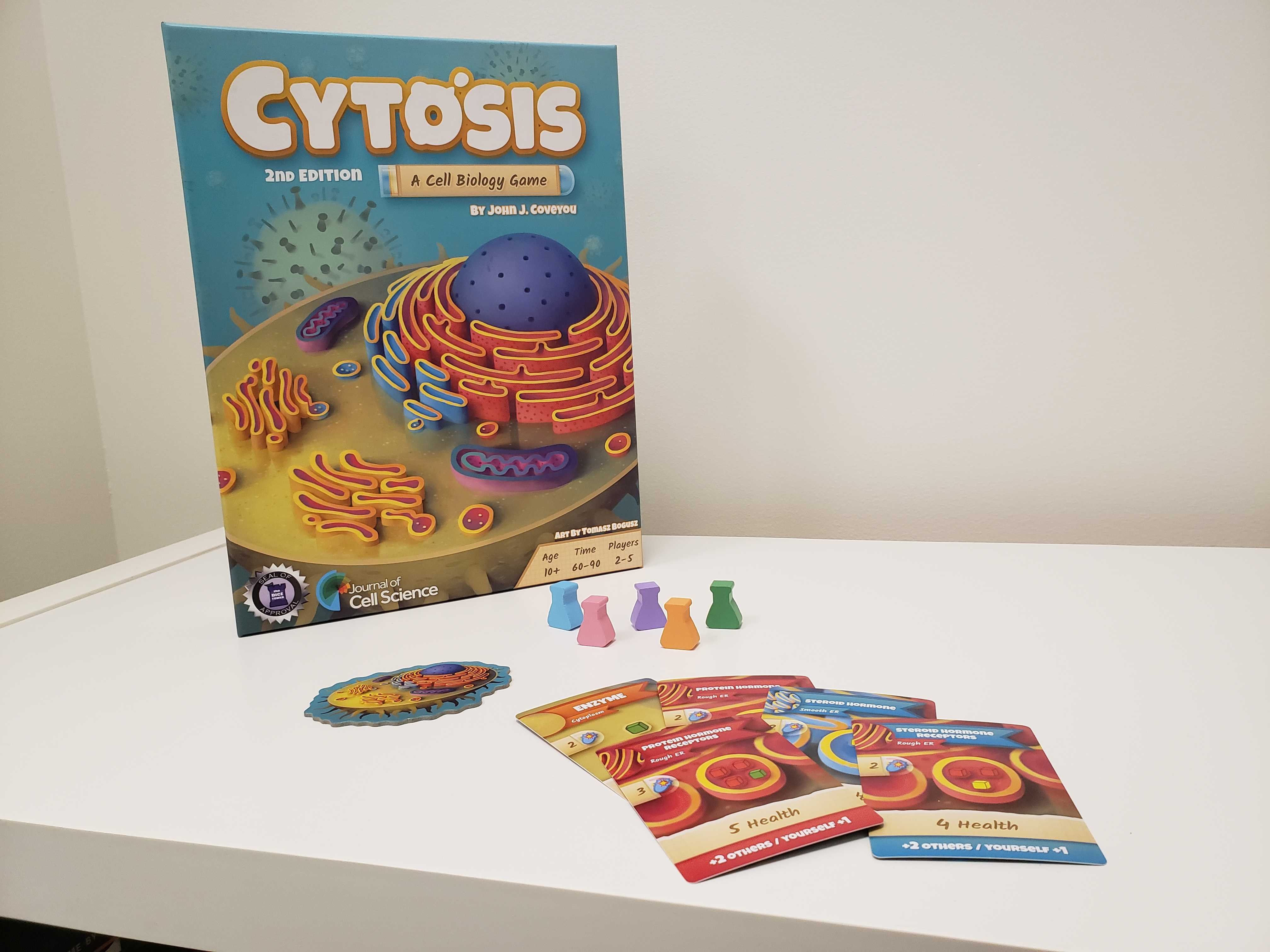
Ages: 10+
Players: 2-5
Time: 60-90 minutes
Categories: Biology, science, competitive, set collection, engine-building
About: In Cytosis, players go through the process of creating hormones in the body. This game does not intend to be a complete textbook (that would be boring!), but instead allows players to be immersed in the world of the cell, and introduced to the concepts and terms. The term protein hormone becomes so much more memorable when remembering: “Oh, if I create a protein hormone receptor here staring in the Rough ER, then I can get extra points when everyone creates protein hormones!” Players are utilizing their resources to gather sets with the most efficiency possible—and I like how efficiency goes with the theme of how the body works in terms of thinking of the body as a machine.
Link to purchase
Ages: 10+
Players: 2-5
Time: 30-60
Categories: Environmental science, geography, set collection, competitive
About: Players collect trail stones and claim national parks as they move across a board with a map of the United States. In addition to learning the names and locations of national parks, players can choose to learn a bit more about each park on it’s card. While easy to learn and simple to play, there is some strategy and a competitive element. There could have been even more done to make this game even more educational (adding state names and more accuracy to the map, integrating elements about the parks—maybe their climate/biome—into the game mechanics), but overall a solid strategy game for families.
Link to purchase
Ages: 10+
Players: 1-5
Time: 40-70 minutes
Categories: Environmental science, resource management, engine-building, competitive
About: This award-winning game is lauded not only for the scientific accuracy of the birds (there are over 170 bird cards with all sorts of cool info about each species), but the math used to design the game. Players work to build habitats and collect and feed birds that work in combination to generate more food, eggs and points. I highly recommend, provided you can find a copy for a decent price, as it is in high demand with limited availability.
Link to purchase
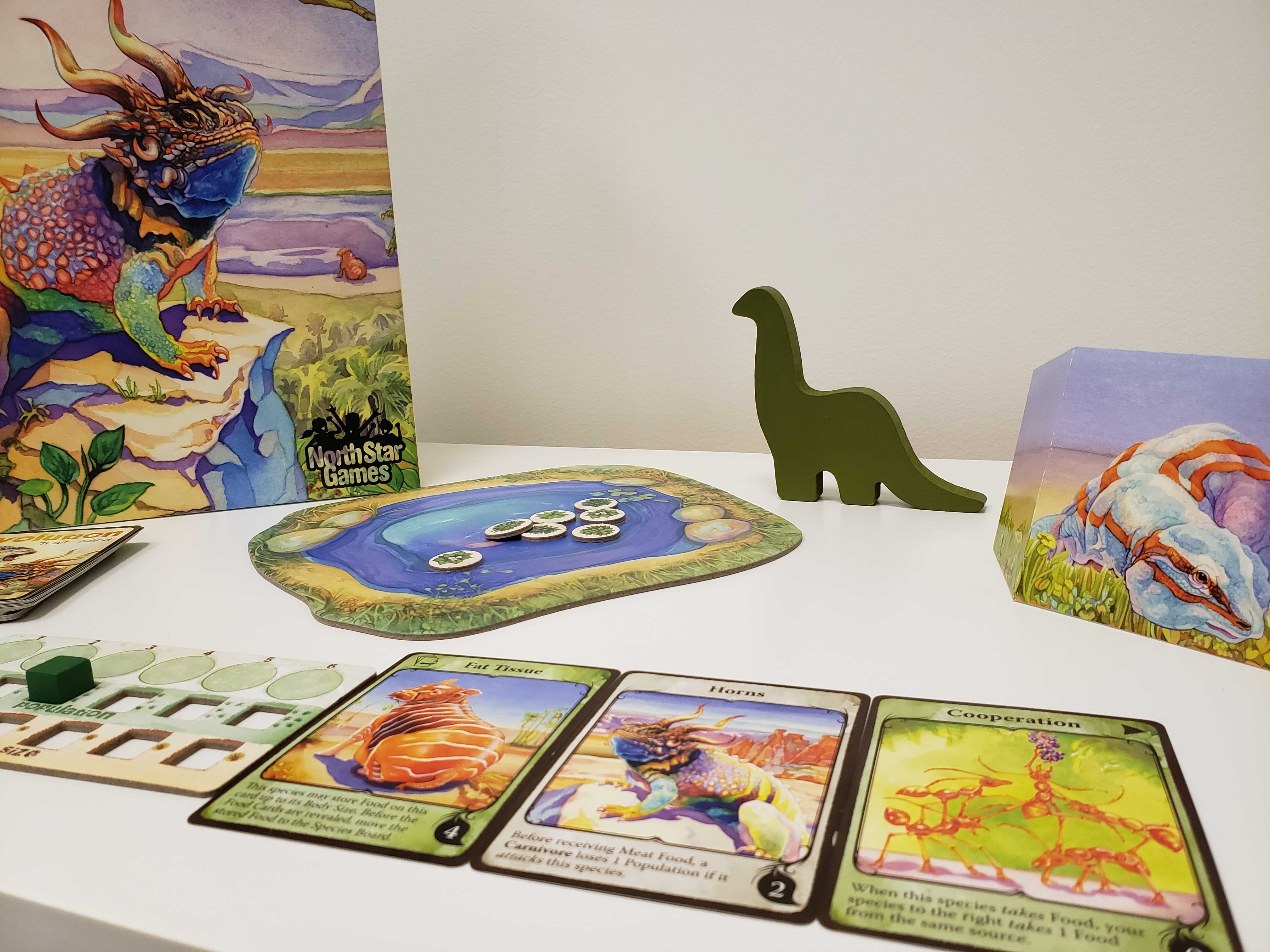
Ages: 12+
Players: 2-6
Time: 60 minutes
Categories: Environmental science, animals, competitive, engine-building, resource management
About: Evolution allows players to explore the concepts of energy cycles and adaptation. Players add traits to their species, building up populations of unique types. With a limited amount of food, and a trait that turns species into carnivores, players have to carefully manage their populations’ food supply, and keep them safe from predators, as resources are limited. Evolution: The Beginning is a simplified version of the game, great for younger players.
Link to purchase
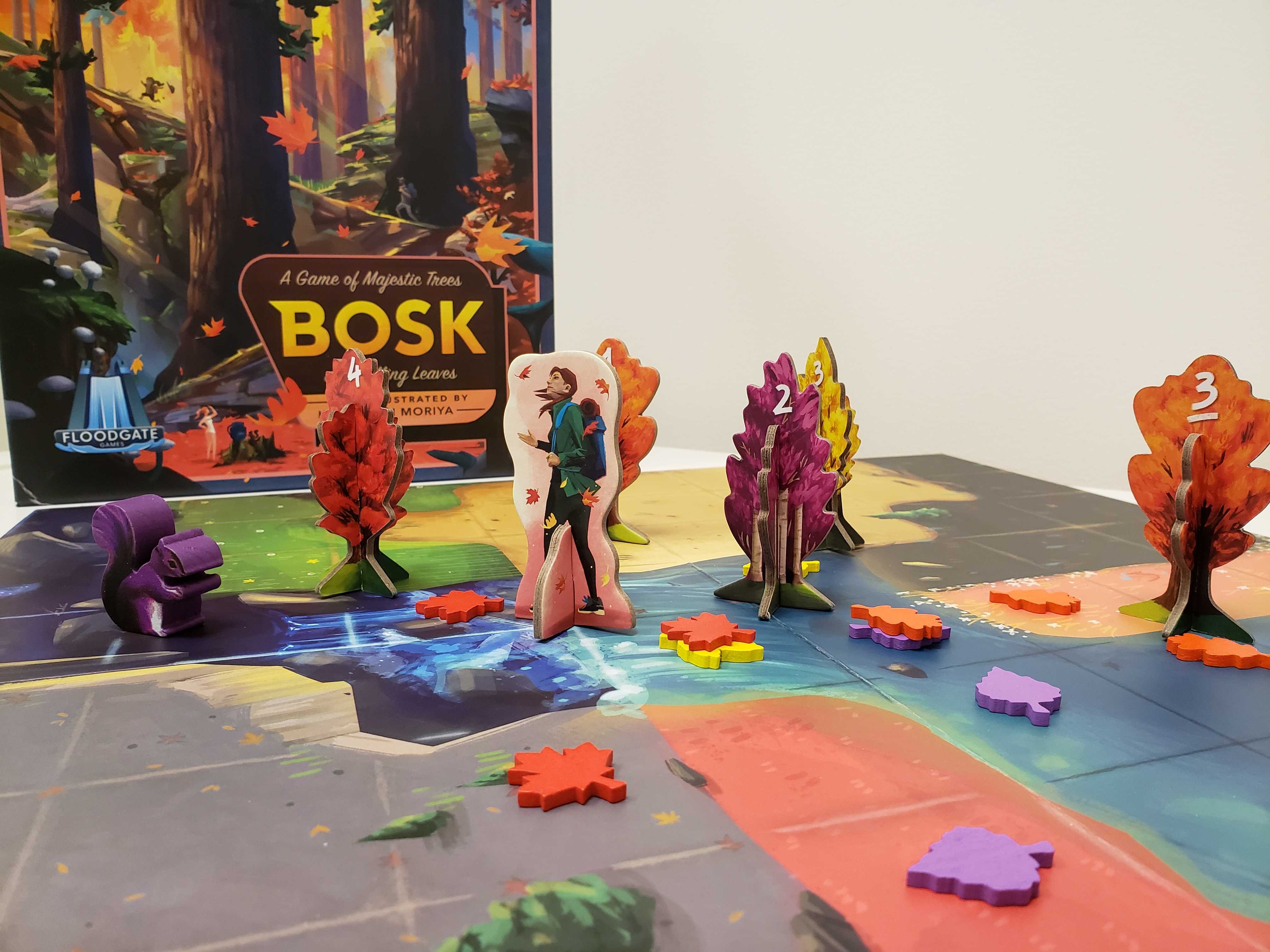
Ages: 13+
Players: 2-4
Time: 20-40 minutes
Categories: Environmental science, area control, spatial reasoning, competitive
About: What’s unique about Bosk is the game takes place over four seasons. In spring, players place their trees of varying numbers on the board, vying to have the most points in each row and column. Each placement will affect two places to potentially score. In summer, the rows and columns are scored. In fall, players take turns placing leaves from their trees, trying to control the different areas of the board. In winter, the leaves are scored. The game touches upon the cyclical component of environmental science, but really shines in developing spatial reasoning and multi-step problem solving!
Link to purchase
Ages: 14+
Players: 1-5
Time: 30-60 minutes
Categories: Resource management, politics, engine-building, drafting, competitive, technology
About: Players build their civilization, choosing to focus on science, military, finance, production, or technology! After drafting cards, players will use their resources to build the cards onto their city, which will help them gain more resources, as well as favor and victory points. This game has a lot of options for strategy, players can really choose what their city will be known for, whether it's inventing technological developments like a universal vaccine, improving your military with submarines, increasing your energy with a nuclear plant, or developing more science fiction and fantastical elements like zeppelins, an underwater city or finding a parallel dimension.
Link to purchase
Thank you for reading to the end! There are so many great games to include, I could not possibly mention them all, nor have I played everything that is out there. I hope these provide a great starting point into your STEM learning adventures in the classroom or as a family.
If you’re looking for a few more, check out my Big List of Board Games that Inspire Mathematical Thinking for more games focused on math in the STEM arena. And let me know your favorite STEM games below in the comments or on Twitter @CalliWrights; I’d love to check them out!
*Some links to purchase include a smile.amazon.com address. Please consider adding MIND Research Institute as your designated non-profit and Amazon will donate a small percentage of your order to our organization, as we work to ensure all students are mathematically equipped to solve the world’s most challenging problems.
*Board game collection courtesy of Unfiltered Gamer: board game reviews, news and live streams.

Calli Wright was the Marketing Manager at MIND Research Institute. She loves playing and designing board games, which she often talks about on twitter @CalliWrights.
Comment